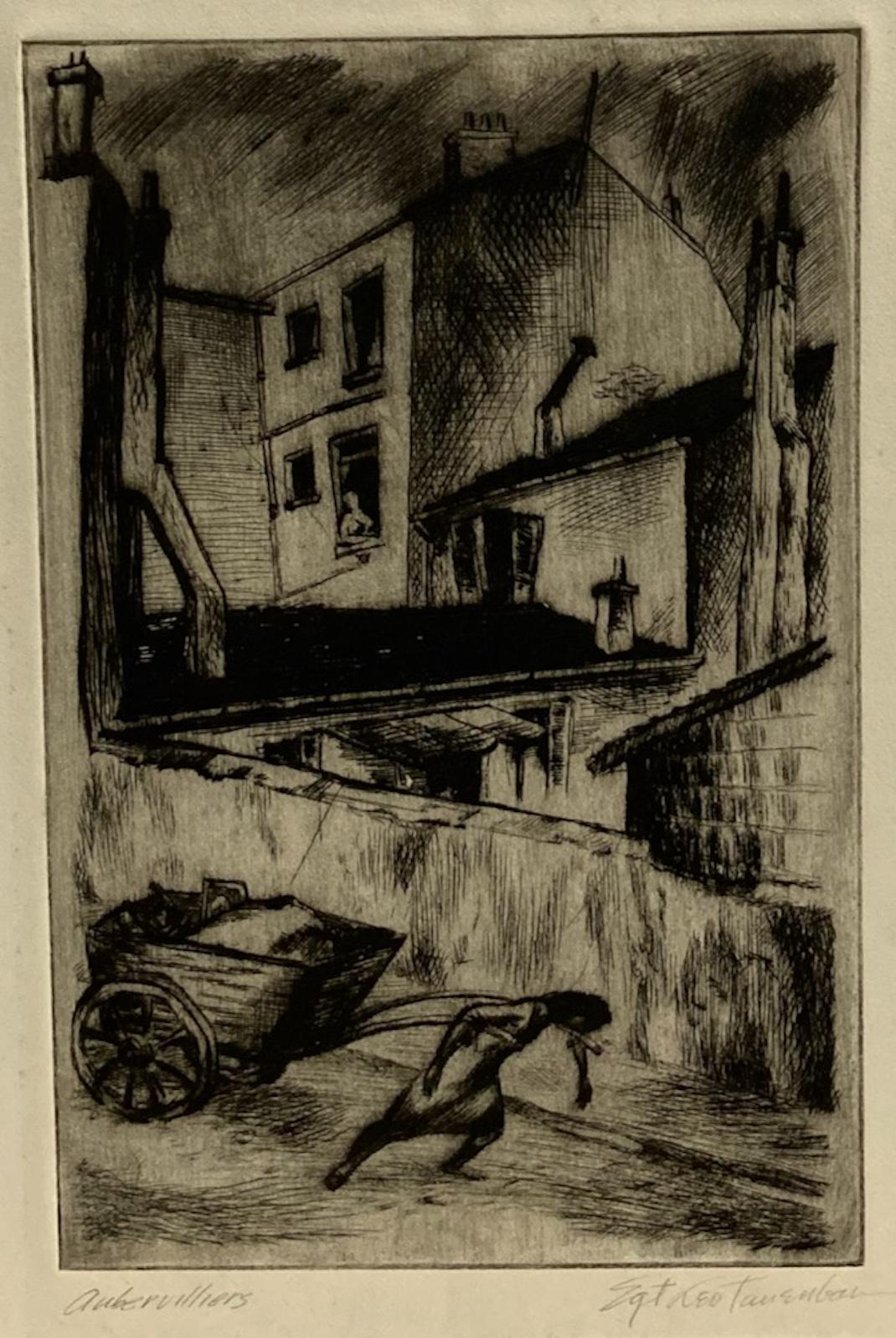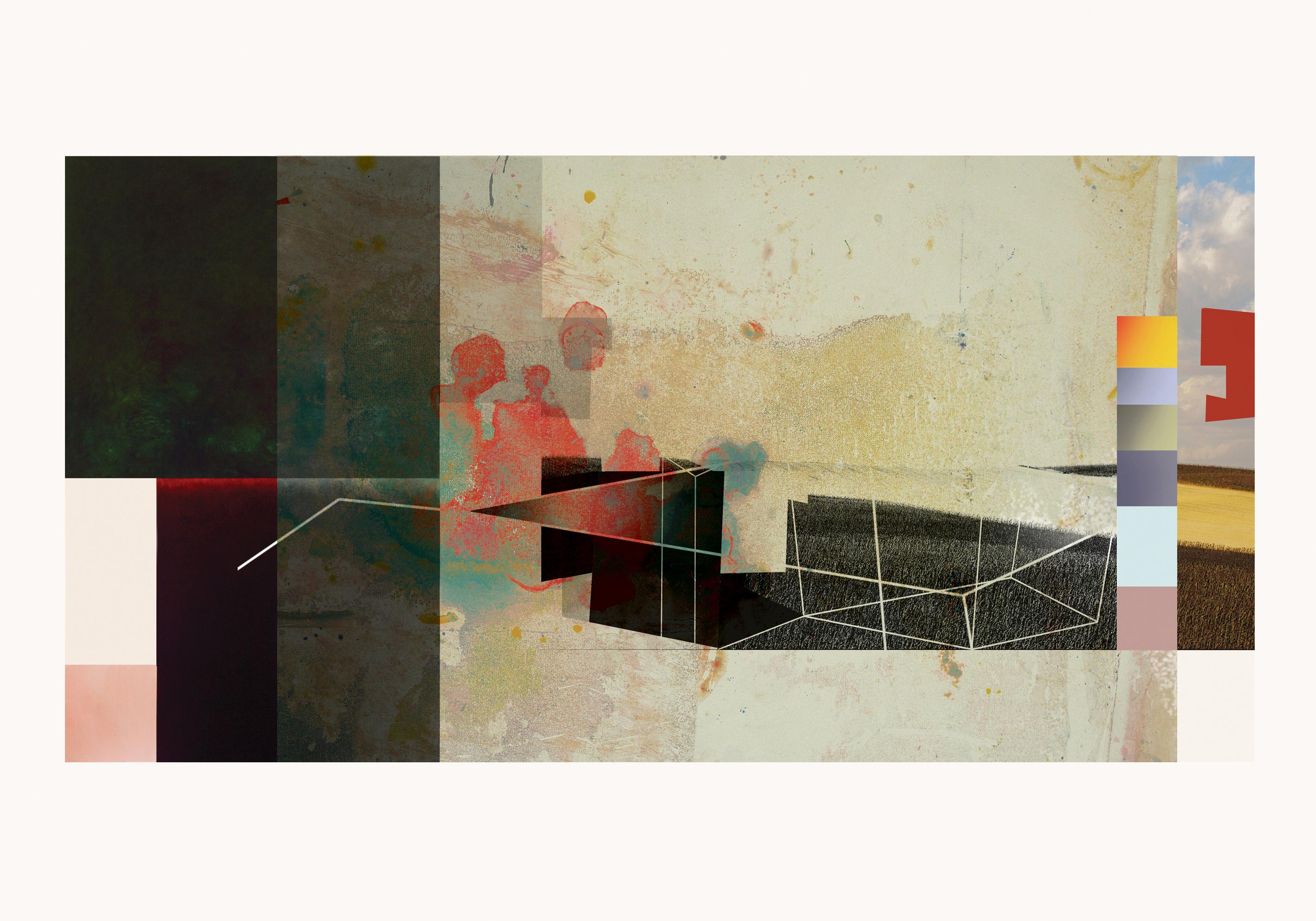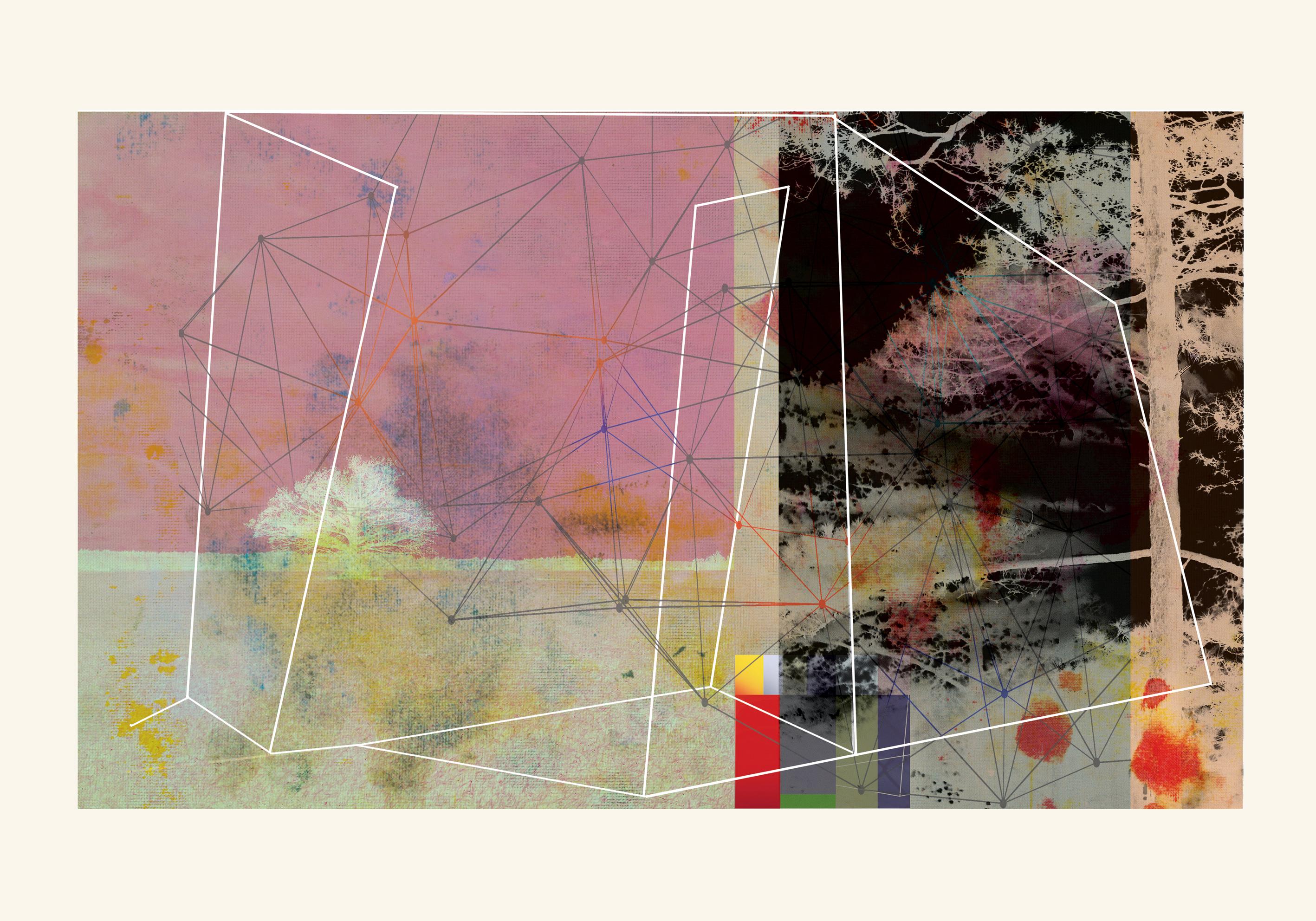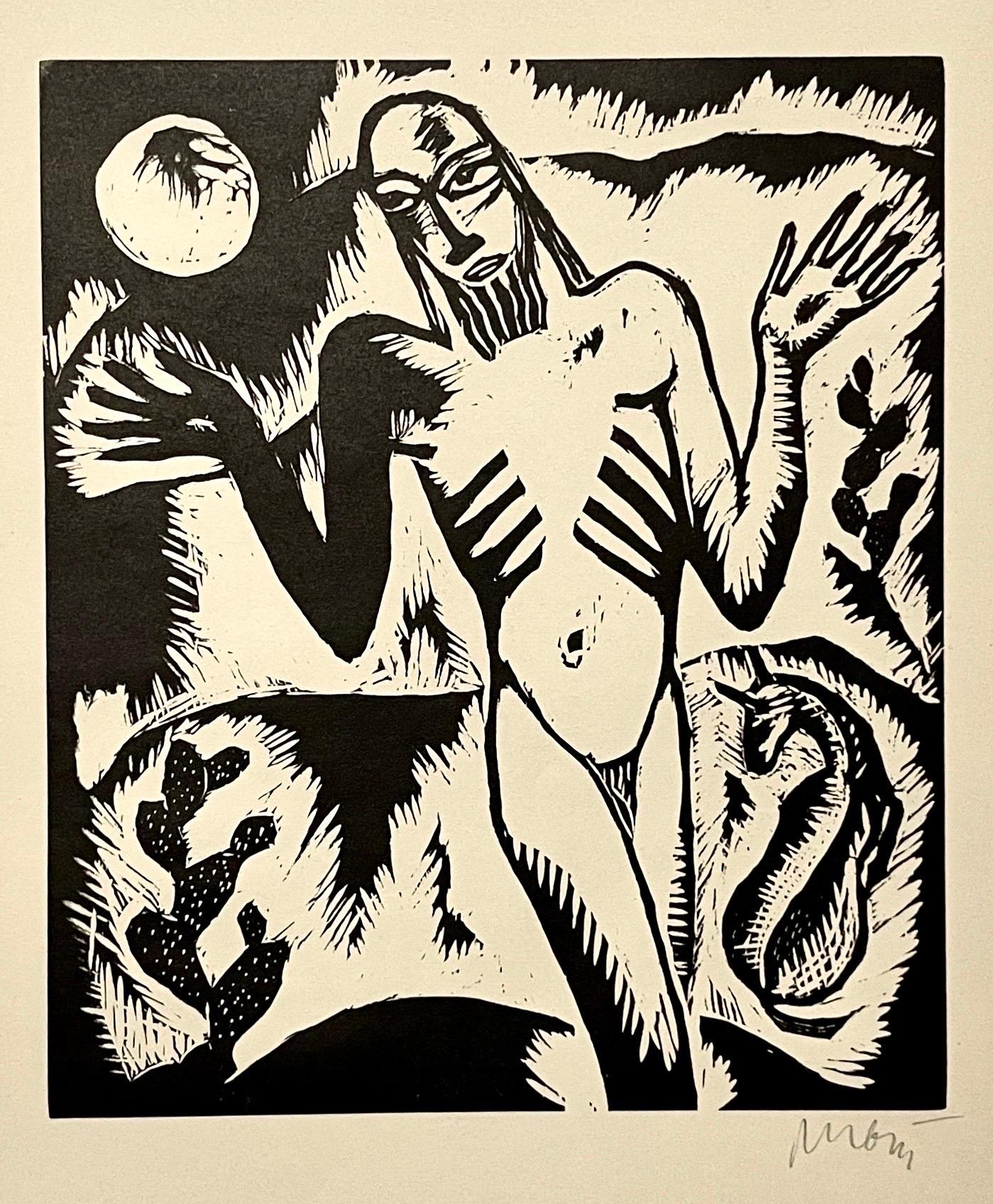Leo GuidaComposition - Original Etching by Leo Guida - 1970s1970s
1970s
About the Item
- Creator:Leo Guida (Italian)
- Creation Year:1970s
- Dimensions:Height: 19.69 in (50 cm)Width: 13.78 in (35 cm)Depth: 0.04 in (1 mm)
- Medium:
- Movement & Style:
- Period:
- Framing:Framing Options Available
- Condition:Insurance may be requested by customers as additional service, contact us for more information.
- Gallery Location:Roma, IT
- Reference Number:
Leo Guida
Prolific throughout the 1960s and 1970s, artist Leo Guida was an influential Italian painter and printmaker.
Beginning in 1969, Guida served as a teacher for nearly two decades at the Liceo Artistico in Latina. While he worked with watercolor paints to create much of his known art, he produced a wide range of graphic prints that is representative of his talents.
Guida worked with Chinese ink and was fluent in a variety of printmaking techniques, which included chalcography, engraving and aquatint. The latter is a technique named for its resemblance to watercolor or ink wash, while engraving is a method of making prints by incising lines into a metal plate with a sharp tool called a burin. Chalcography sees an artist engraving on copper or brass plates.
Guida made art in all kinds of styles over the course of his career. The bulk of his drawings and etchings are richly detailed and fantastical — they feature nudes, imagery from nature and depictions of mythological creatures. Guida’s works on paper show the influence of Spanish printmaker and painter Francisco Goya and are also inclusive of Surrealist flourishes and themes.
Find original Leo Guida drawings and watercolors, prints and paintings on 1stDibs.
- ShippingRetrieving quote...Ships From: Rome, Italy
- Return PolicyA return for this item may be initiated within 14 days of delivery.
- Composition - Original Etching by Leo Guida - 1970sBy Leo GuidaLocated in Roma, ITComposition is an original etching realized by Leo Guida in 1970s. Good condition. Mounted on a white cardboard passpartout (50x35). Not signed and not dated. Leo Guida (1992 - ...Category
1970s Abstract Figurative Prints
MaterialsEtching
- Abstract Compositin - Original Digigraph Print by Martine Goeyens - 2020sBy Martine GoeyensLocated in Roma, ITAbstract Composition is a suggestive artwork realized by the Belgian artist Martine Goeyens in 2020 Digigraph print. Edition of 40. Includes Frame. The artwork is a fascinating ...Category
2010s Abstract Figurative Prints
MaterialsDigital
- Desert Landscape - Original Lithograph by Simona Weller - 1970By Simona WellerLocated in Roma, ITDesert Landscape is an original artwork realized in 1970 by Simona Weller. Mixed colored lithograph. Hand signed, dated and numbered. Edition of 180 prints of which 30 prints in in...Category
1970s Abstract Figurative Prints
MaterialsLithograph
- Piazza Navona - Etching by Giuseppe Malandrino - 1970sBy Giuseppe MalandrinoLocated in Roma, ITPiazza Navona is an artwork realized by Giuseppe Malandrino. Print in etching technique. Hand-signed by the artist in pencil on the lower right corner. Numbered edition104/190 . ...Category
1970s Contemporary Landscape Prints
MaterialsEtching
- Landscape - Original Etching by Léopold Lévy - XX CenturyBy Leopold LevyLocated in Roma, ITLandscape is an original artwork realized by the French artist Léopold Lévy (1882-1966) in the first half of the XX century. Etching and drypoint on paper. Edition of 110 prints. Hand-signed by the artist on the lower right corner; numbered on the lower left. The artwork is part of the series of the "Peintres Graveurs". Perfect conditions. Very beautiful print, fresh and delicate, representing a natural landscape. Black thin lines define the whole composition in a refined way. The composition is realized with geometrical and volumes and lines. Image dimensions: 14.5x19.5 cm. Léopold Lévy (Paris, 1882 - Paris, 1966) a French painter and engraver. The edition of De la nature (De Rerum Natura) illustrated with 41 original etchings is considered one of the most beautiful artist books of the XX Century. He was one of the friends of Charles Edmond Kayser...Category
Early 20th Century Figurative Prints
MaterialsEtching
- Landscape - Original Etching by Léopold Lévy - XX CenturyBy Leopold LevyLocated in Roma, ITLandscape is an original artwork realized by the French artist Léopold Lévy (1882-1966) in the first half of the XX century. Etching and drypoint on paper. Hand-signed by the artist on the lower right corner; signed on plate on the lower left margin. Very good conditions, except for some small spots on the surface of the sheet. Very beautiful artwork representing a natural landscape with some human figures. The composition is characterized by great softness; the strokes are refined and very rapid and smart. The whole composition is very well-balanced and is characterized by a soft chiaroscuro. Léopold Lévy (Paris, 1882 - Paris, 1966) a French painter and engraver. The edition of De la nature (De Rerum Natura) illustrated with 41 original etchings is considered one of the most beautiful artist books of the XX Century. He was one of the friends of Charles Edmond Kayser...Category
Mid-20th Century Modern Figurative Prints
MaterialsEtching
- Red Olent RedBy Shigeki KurodaLocated in San Francisco, CAArtist: Shigeki Kuroda (Japanese, b.1943) Title: Red Olent Red Year: circa 1990 Medium: Soft ground etching and aquatint Paper: Nippon watermarked pape...Category
Late 20th Century Abstract Landscape Prints
MaterialsAquatint, Etching
- Aubervilliers (France)Located in New York, NYTrying my best to decipher the name I get Leo Tanenbaum. Well, (Sergeant) Sgt. Leo Tanenbaum. Sorry that I haven't been able to find a mid-century artist with this name. It's such an...Category
1940s Abstract Expressionist Figurative Prints
MaterialsDrypoint, Etching
- L0310-Contemporary, Abstract, Modern, Pop art, Surrealist, expressionist, birdsBy Francisco NicolásLocated in London, LondonNew casa descompuesta Digital pigment print Ultrachrome ink on Fabriano Rosaspina paper. Hand signed by the artist, and certificate of authenticity. (Unframed) His work has been s...Category
2010s Abstract Figurative Prints
MaterialsArchival Pigment
- L0320-Contemporary, Abstract, Modern, Pop art, Surrealist, expressionist, birdsBy Francisco NicolásLocated in London, LondonBuilding a home Digital pigment print Ultrachrome ink on Fabriano Rosaspina paper. Hand signed by the artist, and certificate of authenticity. (Unframed) His work has been shown i...Category
2010s Abstract Figurative Prints
MaterialsArchival Pigment
- Rare 1923 Cubist Reuven Rubin Woodcut Woodblock Kabbalah Print Israeli JudaicaBy Reuven RubinLocated in Surfside, FLThis is from the original first edition 1923 printing. there was a much later edition done after these originals. These are individually hand signed in pencil by artist as issued. This listing is for the one print. the other documentation is included here for provenance and is not included in this listing. The various images inspired by the Jewish Mysticism and rabbis and mystics of jerusalem and Kabbalah is holy, dramatic and optimistic Rubin succeeded to evoke the spirit of life in Israel in those early days. They are done in a modern art style influenced by German Expressionism, particularly, Ernst Barlach, Ernst Ludwig Kirchner, and Franz Marc, as introduced to Israel by Jakob Steinhardt, Hermann Struck and Joseph Budko. Reuven Rubin 1893 -1974 was a Romanian-born Israeli painter and Israel's first ambassador to Romania. Rubin Zelicovich (later Reuven Rubin) was born in Galati to a poor Romanian Jewish Hasidic family. He was the eighth of 13 children. In 1912, he left for Ottoman-ruled Palestine to study art at Bezalel Academy of Art and Design in Jerusalem. Finding himself at odds with the artistic views of the Academy's teachers, he left for Paris, France, in 1913 to pursue his studies at the École Nationale Supérieure des Beaux-Arts. He was of the well known Jewish artists in Paris along with Marc Chagall and Chaim Soutine, At the outbreak of World War I, he was returned to Romania, where he spent the war years. In 1921, he traveled to the United States with his friend and fellow artist, Arthur Kolnik. In New York City, the two met artist Alfred Stieglitz, who was instrumental in organizing their first American show at the Anderson Gallery. Following the exhibition, in 1922, they both returned to Europe. In 1923, Rubin emigrated to Mandate Palestine. Rubin met his wife, Esther, in 1928, aboard a passenger ship to Palestine on his return from a show in New York. She was a Bronx girl who had won a trip to Palestine in a Young Judaea competition. He died in 1974. Part of the early generation of artists in Israel, Joseph Zaritsky, Arieh Lubin, Reuven Rubin, Sionah Tagger, Pinchas Litvinovsky, Mordecai Ardon, Yitzhak Katz, and Baruch Agadati; These painters depicted the country’s landscapes in the 1920s rebelled against the Bezalel school of Boris Schatz. They sought current styles in Europe that would help portray their own country’s landscape, in keeping with the spirit of the time. Rubin’s Cezannesque landscapes from the 1920s were defined by both a modern and a naive style, portraying the landscape and inhabitants of Israel in a sensitive fashion. His landscape paintings in particular paid special detail to a spiritual, translucent light. His early work bore the influences of Futurism, Vorticism, Cubism and Surrealism. In Palestine, he became one of the founders of the new Eretz-Yisrael style. Recurring themes in his work were the bible, the prophet, the biblical landscape, folklore and folk art, people, including Yemenite, Hasidic Jews and Arabs. Many of his paintings are sun-bathed depictions of Jerusalem and the Galilee. Rubin might have been influenced by the work of Henri Rousseau whose naice style combined with Eastern nuances, as well as with the neo-Byzantine art to which Rubin had been exposed in his native Romania. In accordance with his integrative style, he signed his works with his first name in Hebrew and his surname in Roman letters. In 1924, he was the first artist to hold a solo exhibition at the Tower of David, in Jerusalem (later exhibited in Tel Aviv at Gymnasia Herzliya). That year he was elected chairman of the Association of Painters and Sculptors of Palestine. From the 1930s onwards, Rubin designed backdrops for Habima Theater, the Ohel Theater and other theaters. His biography, published in 1969, is titled My Life - My Art. He died in Tel Aviv in October 1974, after having bequeathed his home on 14 Bialik Street and a core collection of his paintings to the city of Tel Aviv. The Rubin Museum opened in 1983. The director and curator of the museum is his daughter-in-law, Carmela Rubin. Rubin's paintings are now increasingly sought after. At a Sotheby's auction in New York in 2007, his work accounted for six of the ten top lots. Along with Yaacov Agam and Menashe Kadishman he is among Israel's best known artists internationally. Education 1912 Bezalel Academy of Arts and Design, Jerusalem 1913-14 École des Beaux Arts, Paris and Académie Colarossi, Paris Select Group Exhibitions Eged - Palestine Painters Group Eged - Palestine Painters Group, Allenby Street, Tel Aviv 1929 Artists: Chana Orloff, Abraham Melnikoff, Rubin, Reuven Nahum Gutman, Sionah Tagger,Arieh Allweil, Jewish Artists Association, Levant Fair, Tel Aviv, 1929 Artists: Ludwig Blum,Eliyahu Sigad, Shmuel Ovadyahu, Itzhak Frenel Frenkel,Ozer Shabat, Menahem Shemi...Category
1920s Abstract Figurative Prints
MaterialsWoodcut
- Rare 1923 Cubist Reuven Rubin Woodcut Woodblock Print Israeli Hasidic JudaicaBy Reuven RubinLocated in Surfside, FLThis is from the original first edition 1923 printing. there was a much later edition done after these originals. These are individually hand signed in pencil by artist as issued. This listing is for the one print. the other documentation is included here for provenance and is not included in this listing. The various images inspired by the Jewish Mysticism and rabbis and mystics of jerusalem and Kabbalah is holy, dramatic and optimistic Rubin succeeded to evoke the spirit of life in Israel in those early days. They are done in a modern art style influenced by German Expressionism, particularly, Ernst Barlach, Ernst Ludwig Kirchner, and Franz Marc, as introduced to Israel by Jakob Steinhardt, Hermann Struck and Joseph Budko. Reuven Rubin 1893 -1974 was a Romanian-born Israeli painter and Israel's first ambassador to Romania. Rubin Zelicovich (later Reuven Rubin) was born in Galati to a poor Romanian Jewish Hasidic family. He was the eighth of 13 children. In 1912, he left for Ottoman-ruled Palestine to study art at Bezalel Academy of Art and Design in Jerusalem. Finding himself at odds with the artistic views of the Academy's teachers, he left for Paris, France, in 1913 to pursue his studies at the École Nationale Supérieure des Beaux-Arts. He was of the well known Jewish artists in Paris along with Marc Chagall and Chaim Soutine, At the outbreak of World War I, he was returned to Romania, where he spent the war years. In 1921, he traveled to the United States with his friend and fellow artist, Arthur Kolnik. In New York City, the two met artist Alfred Stieglitz, who was instrumental in organizing their first American show at the Anderson Gallery. Following the exhibition, in 1922, they both returned to Europe. In 1923, Rubin emigrated to Mandate Palestine. Rubin met his wife, Esther, in 1928, aboard a passenger ship to Palestine on his return from a show in New York. She was a Bronx girl who had won a trip to Palestine in a Young Judaea competition. He died in 1974. Part of the early generation of artists in Israel, Joseph Zaritsky, Arieh Lubin, Reuven Rubin, Sionah Tagger, Pinchas Litvinovsky, Mordecai Ardon, Yitzhak Katz, and Baruch Agadati; These painters depicted the country’s landscapes in the 1920s rebelled against the Bezalel school of Boris Schatz. They sought current styles in Europe that would help portray their own country’s landscape, in keeping with the spirit of the time. Rubin’s Cezannesque landscapes from the 1920s were defined by both a modern and a naive style, portraying the landscape and inhabitants of Israel in a sensitive fashion. His landscape paintings in particular paid special detail to a spiritual, translucent light. His early work bore the influences of Futurism, Vorticism, Cubism and Surrealism. In Palestine, he became one of the founders of the new Eretz-Yisrael style. Recurring themes in his work were the bible, the prophet, the biblical landscape, folklore and folk art, people, including Yemenite, Hasidic Jews and Arabs. Many of his paintings are sun-bathed depictions of Jerusalem and the Galilee. Rubin might have been influenced by the work of Henri Rousseau whose naice style combined with Eastern nuances, as well as with the neo-Byzantine art to which Rubin had been exposed in his native Romania. In accordance with his integrative style, he signed his works with his first name in Hebrew and his surname in Roman letters. In 1924, he was the first artist to hold a solo exhibition at the Tower of David, in Jerusalem (later exhibited in Tel Aviv at Gymnasia Herzliya). That year he was elected chairman of the Association of Painters and Sculptors of Palestine. From the 1930s onwards, Rubin designed backdrops for Habima Theater, the Ohel Theater and other theaters. His biography, published in 1969, is titled My Life - My Art. He died in Tel Aviv in October 1974, after having bequeathed his home on 14 Bialik Street and a core collection of his paintings to the city of Tel Aviv. The Rubin Museum opened in 1983. The director and curator of the museum is his daughter-in-law, Carmela Rubin. Rubin's paintings are now increasingly sought after. At a Sotheby's auction in New York in 2007, his work accounted for six of the ten top lots. Along with Yaacov Agam and Menashe Kadishman he is among Israel's best known artists internationally. Education 1912 Bezalel Academy of Arts and Design, Jerusalem 1913-14 École des Beaux Arts, Paris and Académie Colarossi, Paris Select Group Exhibitions Eged - Palestine Painters Group Eged - Palestine Painters Group, Allenby Street, Tel Aviv 1929 Artists: Chana Orloff, Abraham Melnikoff, Rubin, Reuven Nahum Gutman, Sionah Tagger,Arieh Allweil, Jewish Artists Association, Levant Fair, Tel Aviv, 1929 Artists: Ludwig Blum,Eliyahu Sigad, Shmuel Ovadyahu, Itzhak Frenel Frenkel,Ozer Shabat, Menahem Shemi...Category
1920s Abstract Figurative Prints
MaterialsWoodcut





